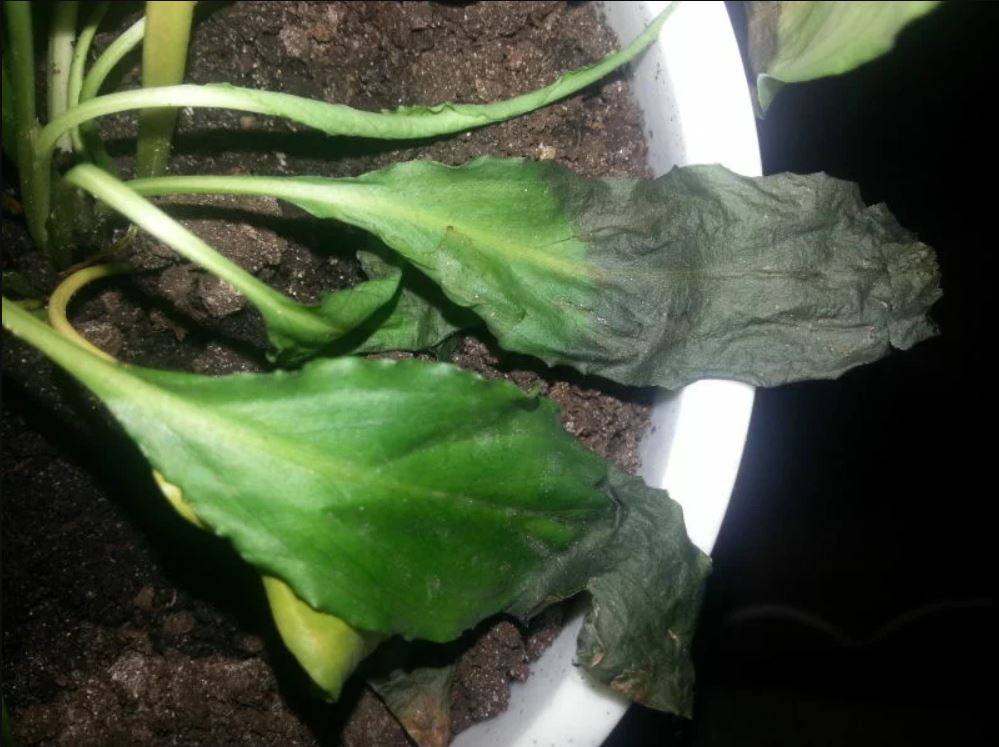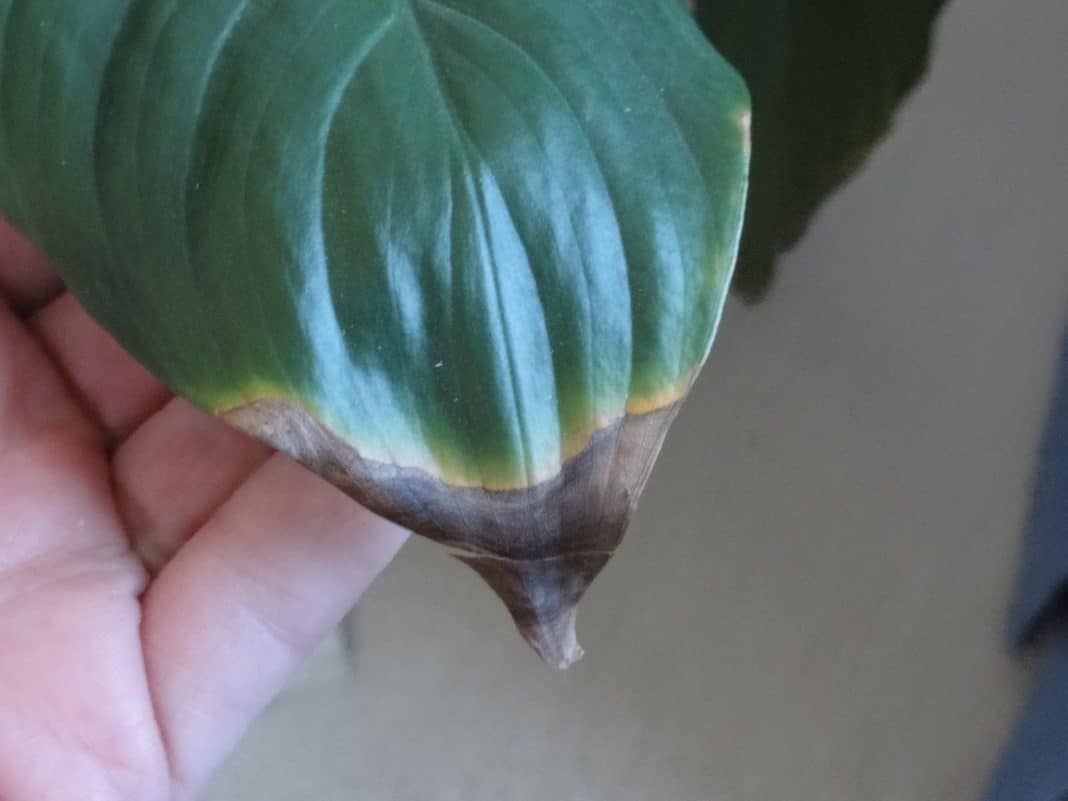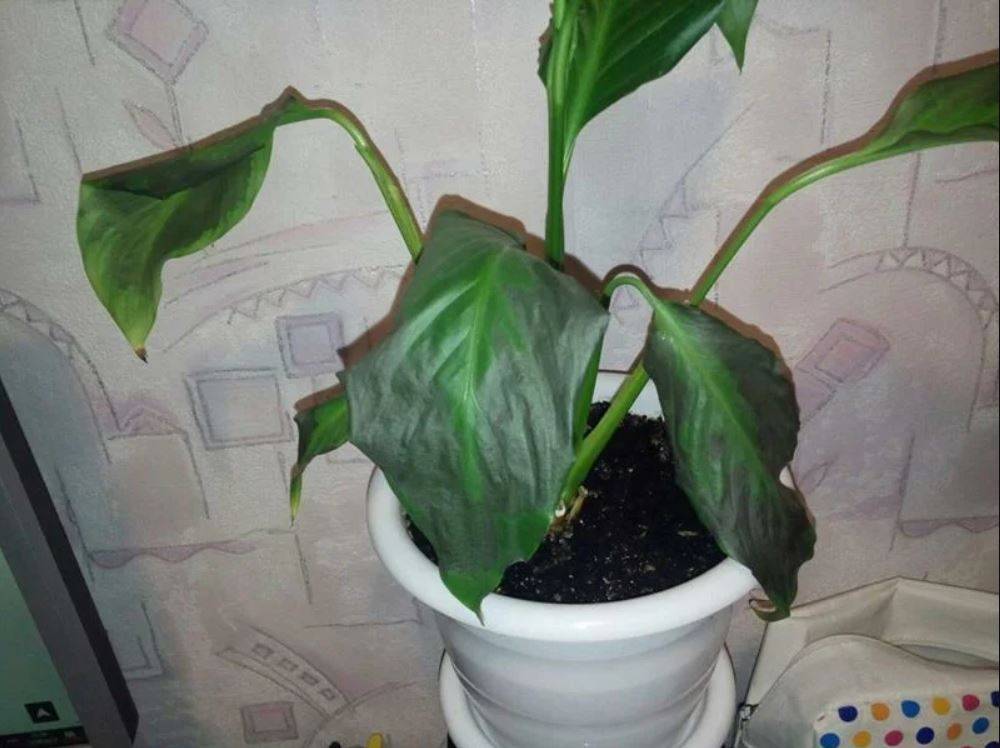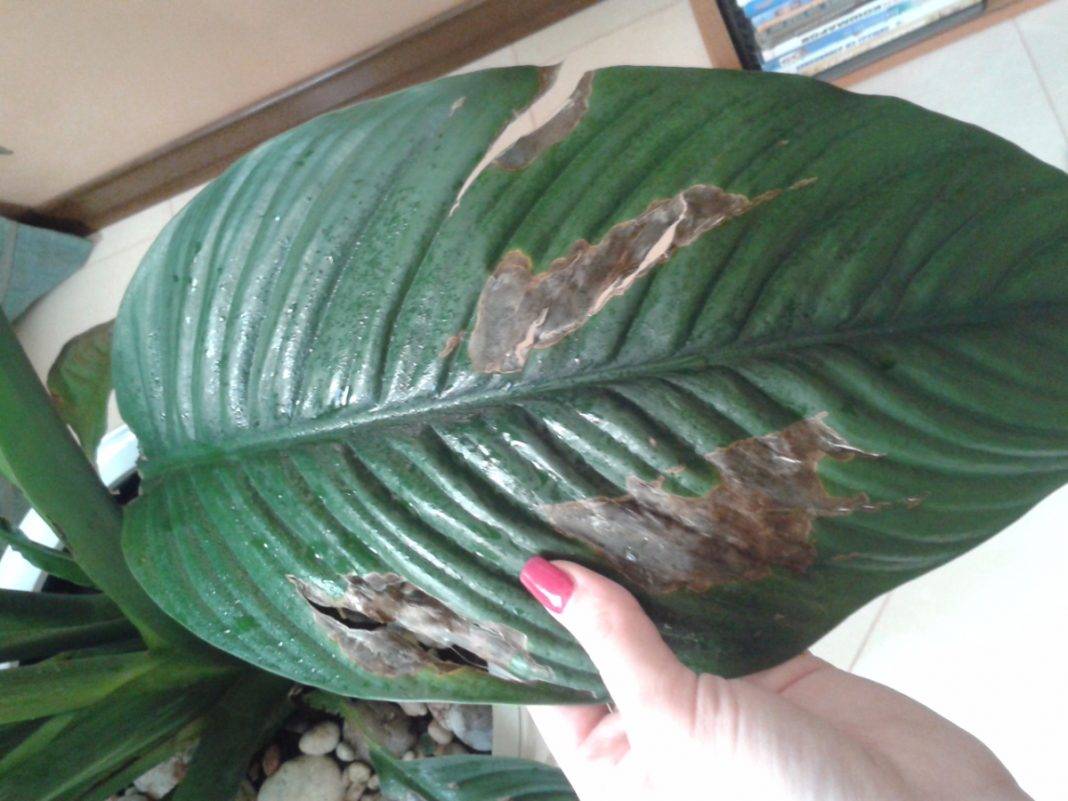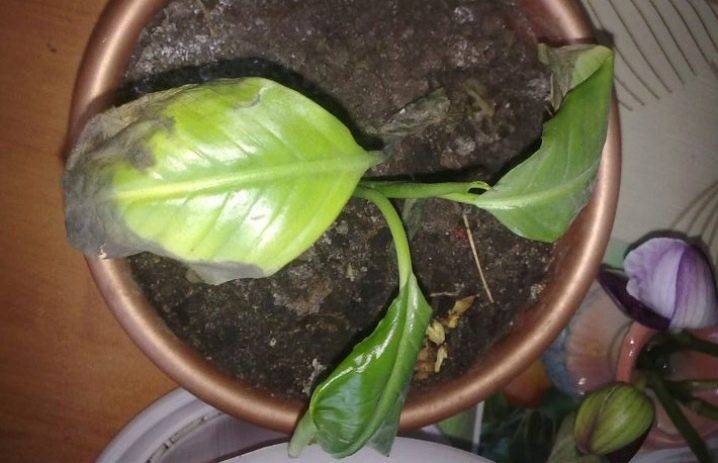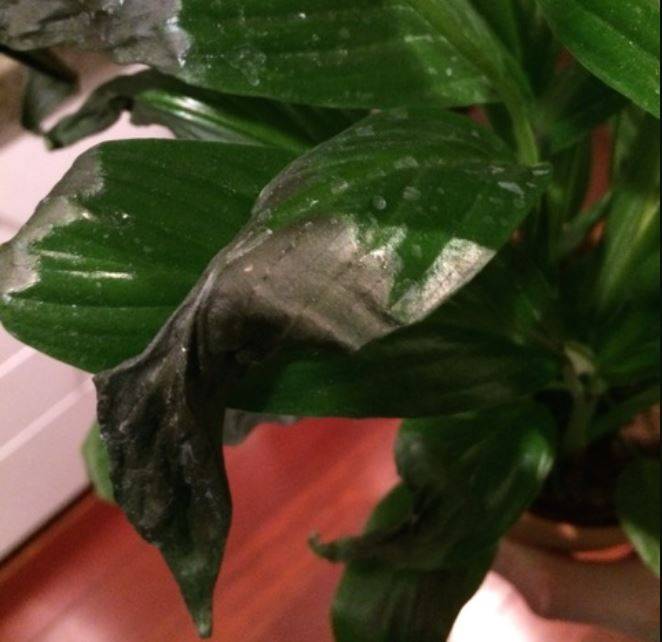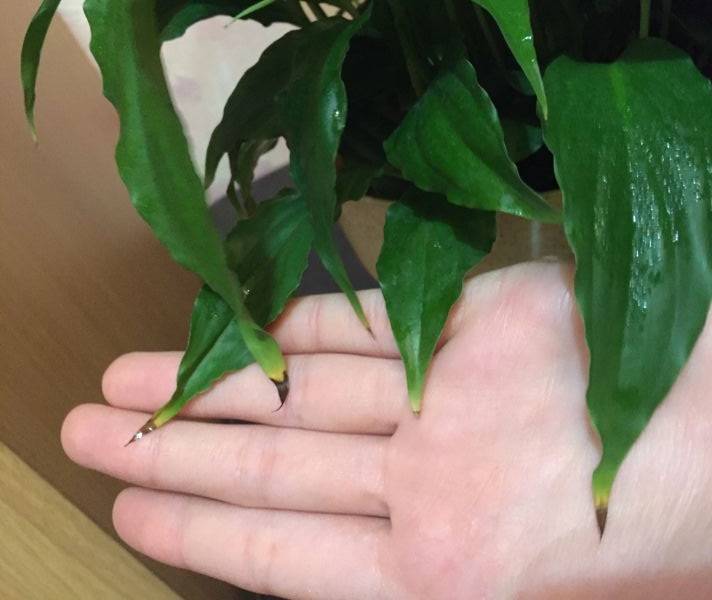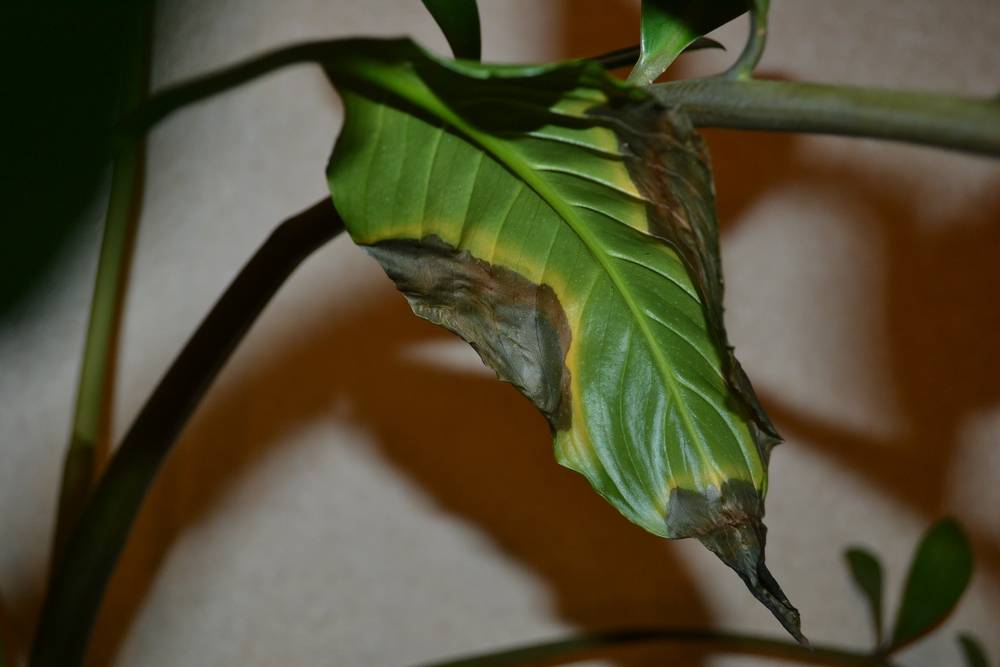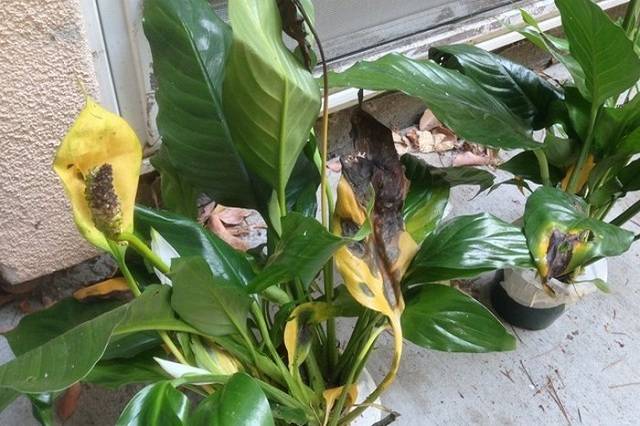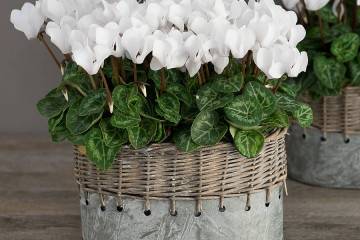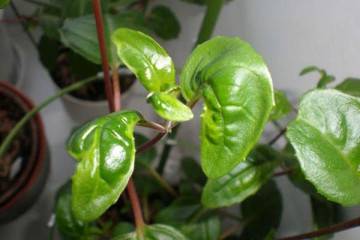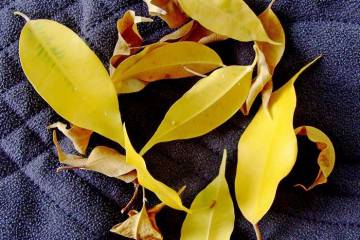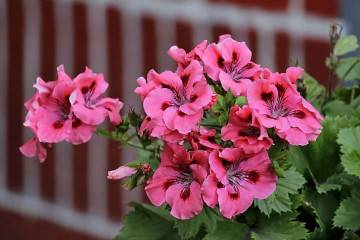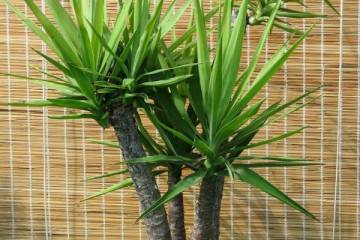Spathiphyllum - leaves turn black at the edges, what to do
Content:
As an indoor flower, spathiphyllum is often chosen by both beginners and experienced flower growers. This is due to the attractive appearance of the buds and foliage, as well as the ease of maintenance. However, even with this unpretentious flower, problems sometimes arise. The main one is that the tips of the leaves turn yellow and black in spathiphyllum.
Signs of dry and wet blackening of spathiphyllum leaves
A healthy plant is distinguished by leaves of a rich green color with a dense structure. At the same time, Spathiphyllum grows rapidly and blooms regularly. There are no blotches on the leaf plate. If the flower begins to lose any of these signs, this may indicate illness or improper care.
There are 2 types of blackening:
- Dry. The leaves turn black, dry and begin to crumble.
- Wet. It is characterized by rotting of the leaf plate, fungal spores and mold appear on the affected part.
In a similar way, most often the plant signals improper care or a fungal infection. But if the flowers also begin to turn black, you should start worrying about the health of the spathiphyllum.
Why do the leaves of the flower "female happiness" dry and turn black
In most cases, the reason for the yellowing and blackening of the leaves of an indoor flower lies in improper care. It is required to organize comfortable conditions for the plant so that it pleases with regular flowering.
Insufficient air humidity
Spathiphyllum is a tropical plant, and therefore a sufficiently high air humidity is comfortable for it. At home, it is required to maintain it at a level of 50-60% so that the leaves of the flower do not become lethargic and do not begin to turn black. Dry air can be detrimental to this plant.
In these conditions, spathiphyllum begins to signal its problems with the help of leaves: they begin to darken and dry. Treatment consists of moisturizing by spraying with a spray bottle.
Stagnant moisture in the pot due to over-watering or heavy soil
Watering is an important part of spathiphyllum care. Not only the volume can affect the state of the leaves of "female happiness", but also the quality of the water. It should be well kept and at room temperature. The softness of water is the key to the full development of an indoor flower.
An excess of water often leads to stagnation in the soil. Subsequently, this causes decay of the root system. Watering should be regular, but this does not mean that there is a specific schedule when the procedure is performed. It is necessary to monitor the condition of the soil.It is worth watering only after the top layer of the substrate has completely dried, and after a couple of hours after that, it is required to drain the water from the pan.
But even a timely procedure can contribute to the accumulation of moisture in the soil, since the earth is heavy. In this case, air exchange in the substrate is disrupted and the roots begin to rot. It is worth treating with a flower transplant. But at the same time, it is worth taking care of the soil in advance - it is better to purchase a special one for aroid plants or for spathiphyllums.
A universal substrate most often of high acidity and heavy enough for this flower. The soil should be slightly acidic or neutral, light, loose. To increase air permeability, sand is added to the soil. Dolomite flour or slaked lime can be used to reduce acidity. You should definitely take care of the drainage layer in the pot. It can be made from pebbles, expanded clay or brick chips.
Sunburn
When growing spathiphyllum at home, you need to take care of choosing the right place for its placement. You can choose any window sills, except for those that face the north.
Direct sunlight on the sheet plate leads to negative consequences. Yellow spots appear on the leaves, which subsequently begin to turn black. To protect the flower from sunburn, it is worth diffusing light.
Fungal infections
Fungal infection primarily affects the root system of the plant. It develops as a result of excessive soil moisture in conjunction with a low air temperature in the room. Externally, the presence of infection manifests itself as follows: the leaves acquire a loose structure, turn black. Brown spots may appear.
Drafts and sudden temperature changes
The right place for the location of the flowerpot with spathiphyllum implies the absence of a draft. Otherwise, the appearance of the plant may suffer. Sudden changes in temperature are also harmful to the plant. It must be borne in mind that a tropical flower is thermophilic.
When the air temperature in the room decreases, the foliage begins to blacken and go down. Spathiphyllum can recover soon if hypothermia was insignificant. However, the blackened parts will remain on the sheets.
Excess or lack of nutrients
At first, the leaves may turn yellow and then turn black due to the concentration of nutrients in the soil. In this case, it is worth remembering how often the grower introduces fertilizers into the substrate. If the procedure is carried out rarely or not at all, then the reason is an insufficient amount of nutrients.
Top dressing should be introduced into the soil from March to September, when the plant is in the growing season. It spends a lot of energy on growing green mass and flowering. Fertilizers should be applied once every 1-2 weeks. During the rest period, the number of procedures should be reduced to 1 per month. All the necessary components for a flowering plant must be present in the dressing.
However, an overabundance of them also harms the spathiphyllum, and therefore you do not need to be zealous. If the end of the leaf plate has acquired a brown color, it is worth revising not only the frequency of introduction of dressings, but also their composition. The abundance of minerals harms the external characteristics of the flower. You can save the plant by cutting off all damaged leaves and stopping the introduction of new portions of fertilizers.
Blackening localization and treatment
Depending on the localization of blackening, you can find out what caused this process to start.It is required to treat a flower in each case by different methods. If the problem is improper care, you can fix the situation. However, with a fungal infection or decay of the roots, it is necessary to quickly navigate and start treatment, otherwise the flower will die.
How to save spathiphyllum if the leaves turn black entirely
Blackening of the entire leaf plate or the appearance of brown spots on it means the presence of a fungal disease. Most often it is black rot. It is required to start treatment as soon as possible so that the plant does not die.
First of all, the plant should be isolated from other indoor flowers, since the fungal infection can spread through the air. After that, spathiphyllum must be removed from the pot and carefully examine the root system. It is recommended to first prepare a new substrate and a container into which the plant will subsequently be transplanted.
It is recommended to cut off damaged roots and leaves with a sharp garden knife. Instruments used in the transplantation process must be decontaminated before and after the procedure. Sections should also be disinfected; this can be done using activated charcoal or charcoal, as well as ground cinnamon.
The plant needs to be processed. Most often, for these purposes, take solutions of "Fundazol" or "Topsin" 0.2%. The most effective treatment is to immerse the flower container in the diluted preparation. After that, you can land in pre-prepared soil. Subsequently, it is worth taking proper care of the plant. Re-treatment with a fungicidal solution will be required a couple of weeks after transplanting.
What to do if only the tips of the leaves darken
There are many reasons for the darkening of exclusively the tips of the leaves of the spathiphyllum. The most popular of these is the frequent introduction of mineral supplements. Usually, the grower simply stops fertilizing the plant for a long time until it returns to normal. However, this may not always help, and therefore the treatment consists in transplanting a flower into a pot with a new substrate.
When performing the procedure, you should adhere to the following plan:
- Prepare a new substrate by making it yourself or by purchasing a ready-made mixture. When choosing the latter option for looseness and lightness, it is recommended to add vermiculite or perlite to it.
- Remove the spathiphyllum from the flower pot, shaking off excess soil from the roots.
- It is recommended to wash off the remains of the substrate with fertilizers with warm running water.
- Transplant the plant.
Also, the cause of wilting can be the presence of a bacterial disease - gommosis, which is characterized by blackening of the tips and edges of the leaf plate and is accompanied by its gradual wrinkling. It is often transmitted from certain plant species that grow nearby. To eliminate the disease, it is worth cutting off the affected leaves, and rinsing healthy ones with soapy water.
After that, it should be treated with drugs such as "Alirin", "Gamair" or "Glyocladin". The leaves of the flower must be sprayed with stressgens. Then it is worth taking care of the correct placement of the plant and further care for it.
How to treat "female happiness" if both leaves and flowers turn black
By blackening not only the leaves, but also the flowers, spathiphyllum can react to excess moisture or heavy soil. First of all, it is recommended to learn how to properly water the plant. It should be regular, but not very frequent. Despite the fact that the flower grows in the wild in wetlands near rivers and reservoirs, the stagnation of water in a pot does not please him at all.
Watering should be carried out after the top layer of the soil has dried.A quarter of an hour after the procedure, it is necessary to drain the water from the sump. In a neglected case, spathiphyllum will have to be transplanted. The same is required with the wrong choice of substrate. It is also important not to forget about the drainage layer at the bottom of the container with the houseplant.
Prevention of wet and dry blackening
If, after the treatment of the flower, the symptoms reappear, it is recommended to think about taking preventive measures that will help strengthen the spathiphyllum. It is necessary to limit external factors. For this, it is not recommended to allow cold outside air to enter the room, not to ventilate the flower. In the summer, you can take spathiphyllum outside.
In an apartment it is worth creating the most comfortable conditions for finding an exotic plant in it. The temperature should be +23 degrees Celsius. It is also worth maintaining the air humidity in the region of 50-60%. It is not recommended to forget about spraying the leaves of the flower, but it is necessary to carry out this procedure as needed.
The flowerpot should be placed in a sunny place, but the rays must be scattered using special fabrics and awnings. Regular watering involves checking the moisture level in the soil.
Top dressing should be done depending on the season, as well as the need. If they were applied too often or in high concentration, it is worth refraining from fertilization for a while. But if the flower withers due to a lack of nutrients in the soil, it is necessary to make special complexes for aroid plants.
Quite often, there is a situation when the leaves of the indoor flower spathiphyllum turn black at the edges, what to do in this case, not every florist knows. To cope with the problem is quite simple, you just need to understand the cause of this phenomenon in time, and also take measures to eliminate it. You should learn how to properly care for the plant so that the spathiphyllum pleases with the regular flowering and colorfulness of its leaves.

